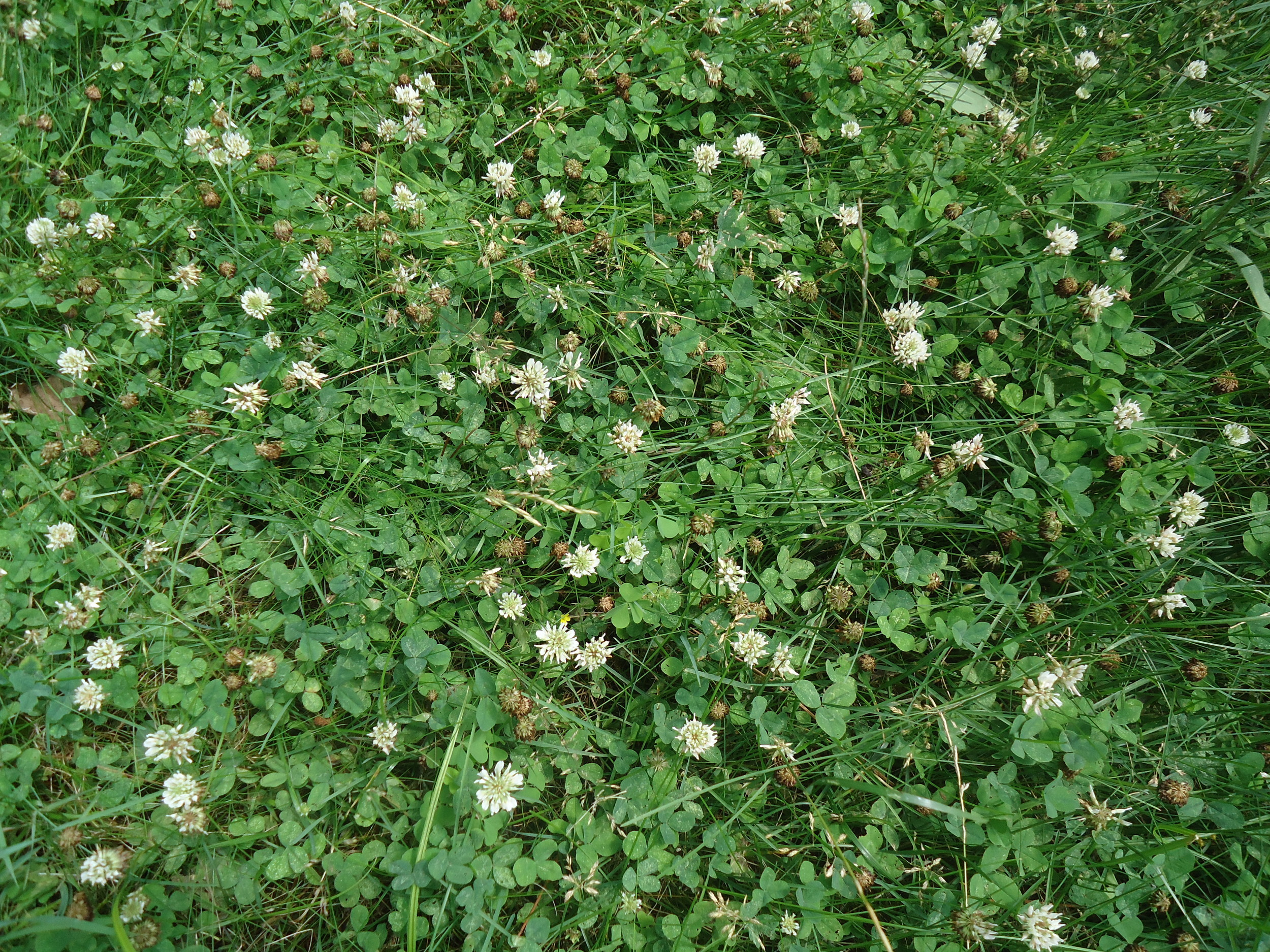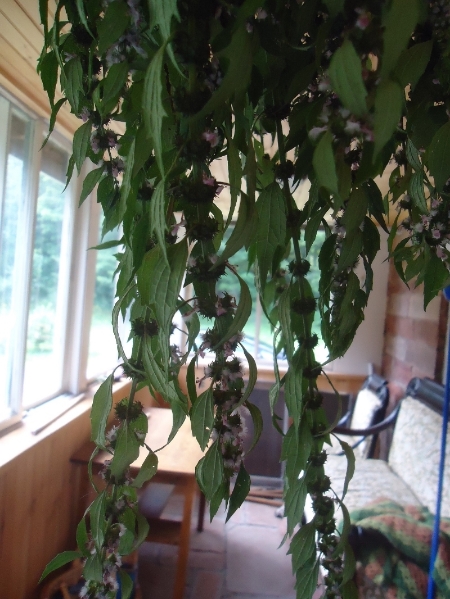Come along, time for another healing walk through the back yard.
A couple of weeks ago, the boys were mowing the lawn. Suddenly the lawn mower quit. I immediately wonder: lawn mower ill or kids quitting when the job is not half finished? Jake yells to me: "Mom, come over here, please." I go over to see this nice sized patch of purple flowers he has neatly mowed around. I was not sure what they were but glad he left them intact, knowing that next year the patch will be bigger!
So, my sister googled the image, a few days later, when I find some in my Mom's yard. This purple beauty is Self-Heal (Heal All), a powerhouse healing plant from the Mint family! Good for: sore throats and mouth sores, fevers, diarrhea, skin wounds and sores, a diuretic for kidney ills, and conjunctivitis.
This humble plant contains antibiotic, hypotensive (lowers blood pressure), and anti-mutagenic (think cancer) properties. Traditional Chinese Medicine considers it a cooling plant and uses it to treat the liver (inflammation) and aid circulation.
Thanks Jake for seeing these 'lil flowers in the lawn and knowing to protect them from the hungry lawn mower!
Self-Heal growing next to a friend, White Clover.
White Clover: Colds, coughs, fever, and vaginal infections. Flower tea is used for arthritis and gout, health conditions in the same family.
White Clover
Wild Strawberry leaves were once used as a nerve tonic, for bladder and kidney ailments, jaundice, scurvy, diarrhea, stomachaches, and gout. Fresh leaf tea was used for sore throats. Berries are eaten for scurvy and gout... something tells me to eat them just because they are yummy! Root tea was used to treat gonorrhea, stomach and lung ailments, irregular menses, and as a diuretic. What a humble little plant!
My yard is carpeted with Wild Strawberry plants. I have caught the cat's eating them on many occasions, bet they were self medicating their bellies!
Rhubarb root is delightful for constipation as it stimulates the liver to release bile which promotes colon cleansing. The root helps lower cholesterol, is an antiseptic, relieves spasms, has anti-tumor effects, is a diuretic, and a general tonic for good health.
Rhubarb stalks are a good source of calcium, anti-oxidants, are a laxative, and a purgative. Rhubarb is high in dietary fiber, protein, vitamin C, vitamin K, B complex vitamins, potassium, manganese, and magnesium. Rhubarb is a rich source of polyphenolic flavonoids like beta-carotene, lutein, and zeaxanthin. Hey, rhubarb is a "superfood" that does not have to be imported thousands of miles!
Caution: Do not eat the rhubarb leaves... TOXIC ALERT! The triangular leaves are extremely high in oxalic acid, which can cause severe illness in people, resulting in the common belief that rhubarb is poisonous. If the plant is subject to extreme cold, the dangerous acid can migrate into the stalk, so be sure to store rhubarb in a warm or temperate space, just like the climate it normally grows in.
My Rhubarb patch, looking a little ill this time of year!
Bee balm: My patch is a mix of wild and cultivated. I planted it to feed the hummingbirds and have found it attracts bees, dragon flies, butterflies, and various other flying insects! It is Wild Bergamot! The leaf tea is used for colic, to expel flatulence (gas) and parasites, colds, fever, stomachaches, nosebleeds, insomnia, and heart troubles. It was used with measles to induce sweating and "fever" the virus out of the body.
Bee Balm
Plantain: Here is a plant for your skin! Got some pesky bug bites? Chew up plantain leaves and put the chewed up "poultice" onto the bites. Let them sit for a bit and soothe the bug bites. This is back yard first aid! Plantain is used to heal all sorts of skin issues, sores, and ulcers as it stimulates the healing process.
This plant is another healing powerhouse, used as a prominent folk cancer remedy - healing plant in South America. My yard is a cancer healing center!
Plantain is a confirmed antimicrobial. This is what we should be making hand sanitizers out of, not toxic chemicals and over used and abused antibiotics.
Plantain's seeds (the seed stalks are an easy way to identify this plant) are mucilagenous and used to reduce cholesterol.
Plantain
Wild Geranium: This fun little plant grows atop my septic tank. I am not sure I would ever want to harvest it from this spot...
Wild Geranium's root is used for stopping bleeding, diarrhea, dysentery, hemorrhoid relief (seems to me it would be healing to varicose veins as well), for gum disease, kidney and stomach ills, and as a diuretic. The powdered root is used to heal canker sores, apply topically. Externally it is used as a cancer remedy.
Wild Geranium
Motherwort
Motherwort: This plant, hanging here on my front porch (above picture) was an awesome gift from Martha Pickard's farm, (Nourished Roots Certified Nutrition Specialist). I am going to tincture it as Motherwort is a wonderful healing plant for the female reproductive tract: promotes and regulates menstruation, as an aid in childbirth, as a uterine tonic, and for menstrual cramps. I would mix it with Red Raspberry leaf and Stinging Nettle leaf for an amazing uterine tonic and female reproductive tract healing remedy.
Motherwort is also used for asthma, as a sleep aid, for heart palpitations, for sciatica, fevers, spasm, nerve pain, and stomachaches.
Motherwort is equally awesome for the heart, nourishing and strengthening the heart muscle and its blood vessels. It is a remedy for most heart diseases and rapid heart rate (tachycardia). I would blend it with Hawthorne Berry for heart-loving nourishment!
Below is the pint of Motherwort tincture I have brewing. The Motherwort demands respect when handling, like Stinging Nettles. It has sweet, little, biting blossoms whorling about the stem. Handle carefully, lest you get picked!
Thank you Jane for always keeping a supply of organic vodka at Village Wine & Liquors, Potsdam. Keeps my tincture "squeaky clean!"
I would be horribly remiss if I did not mention my best herb friend here... Stinging Nettles. Yes, that is a gallon jug of Nettle, Red Clover flower, and Strawberry leaf tea. Thank you John Casserly for the big bag of dried Nettles. What a gift!
Herbs ARE very healing to body, mind, and soul. The herbs nourish the physical body with vitamins, minerals, and healing chemical constituents that we really do not need to know their every name... just know that they work. Herbs heal the mind because of the thinking you do to learn about their healing properties. Learning about herbs is a mind soothing activity. You are taking self-responsibility for your own health and acknowledging, at a very deep level, that you are not at the "hands" of fate and genetics. You can do something, everyday, to make yourself feel and function from a vibrant space. Herbs heal the soul because... well, look at my friendly connections just in this post. My sister, Ginny, googling Self-Heal and teaching me a new plant, Martha gifting me with Motherwort, John gifting me with Nettles, and Jane gifting me with always having organic vodka available. Every time I use these healing gifts, I will think of my dear friends. Self-Heal will always flash my sister into my mind. Herbs keep me connected with the best people and that is very soul soothing!
Creeping Wood Sorrel: This is that fun plant kids pick to eat because it is sour tasting. I ate plenty as a kid! Perhaps it is a wise, intuitive, healing action for kids who need the vitamin C after a long winter in Northern NY!
Traditionally, the leaves were chewed to relief mouth sores, sore throats, and nausea. Fresh leaves are poulticed and used on skin sores and ulcers, as well as cancers. Leaf tea is used for scurvy, urinary tract infections, and fevers. Caution: Large doses may cause oxalate poisoning (much like the rhubarb leaves above).
Creeping Wood Sorrel, notice the tiny yellow flowers. When in full bloom, flowers will be all over them. Maybe flowers are another characteristic that attracts kids.
I hope I have helped you to look at the plants in your yard from a different perspective, a healing point of view. I always feel so sad for the lawn that people try to mold and shape into nothing but pure grass by cutting down and digging up plants and applying toxic chemicals. When we leave nature as it is, bio-diversified, we have a healing oasis right out our back door (front door too!).
If you sit on the lawn, so you are close to the ground, and look at just a 2 square foot space, you will be amazed at the biodiversity of plant life in just that small space. Even more fun, try moving about your yard, sitting in different spots along your journey. By the end of your adventure, I bet you can find 50 to 100 different species of plants!
Go ahead, take a walk and look into your grass. Sit down and really look. I bet you can find many, tiny plants interwoven with the grass blades, struggling to come to life. That is your healing garden!
Blessings, Paula
Self-Heal... another pretty picture! I see Wild Strawberry leaves, plantain, white clover, and wood sorrel intertwined in here!













